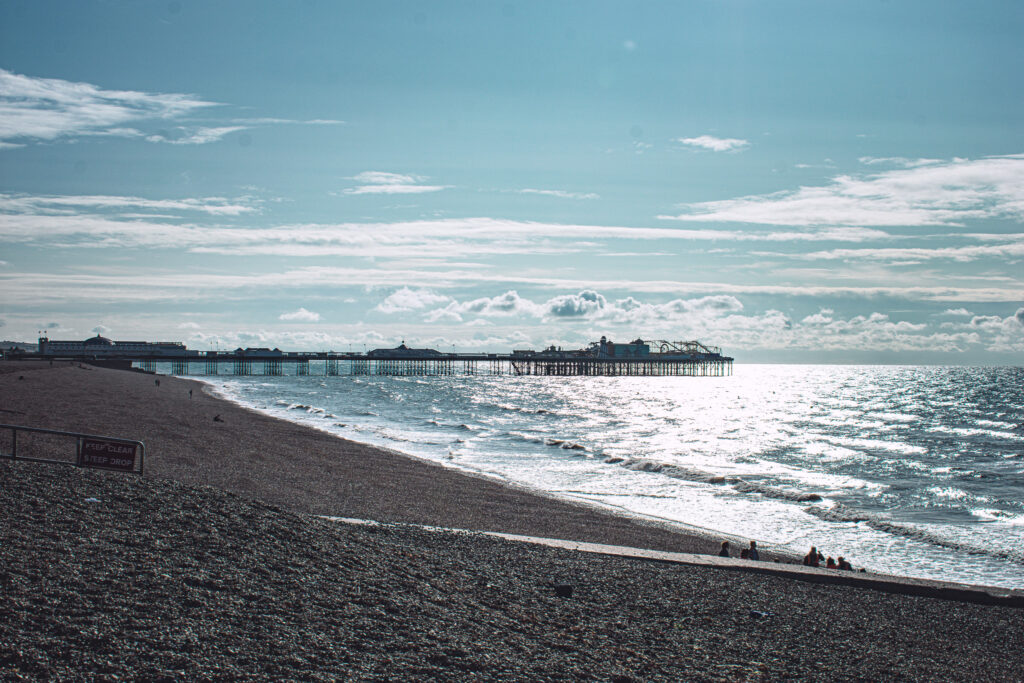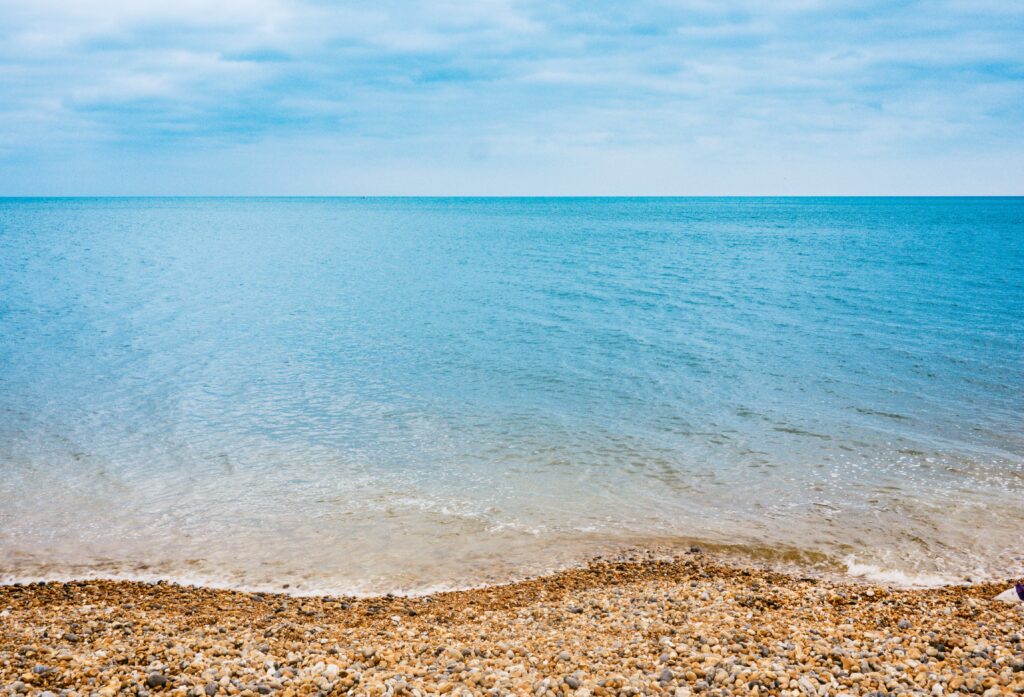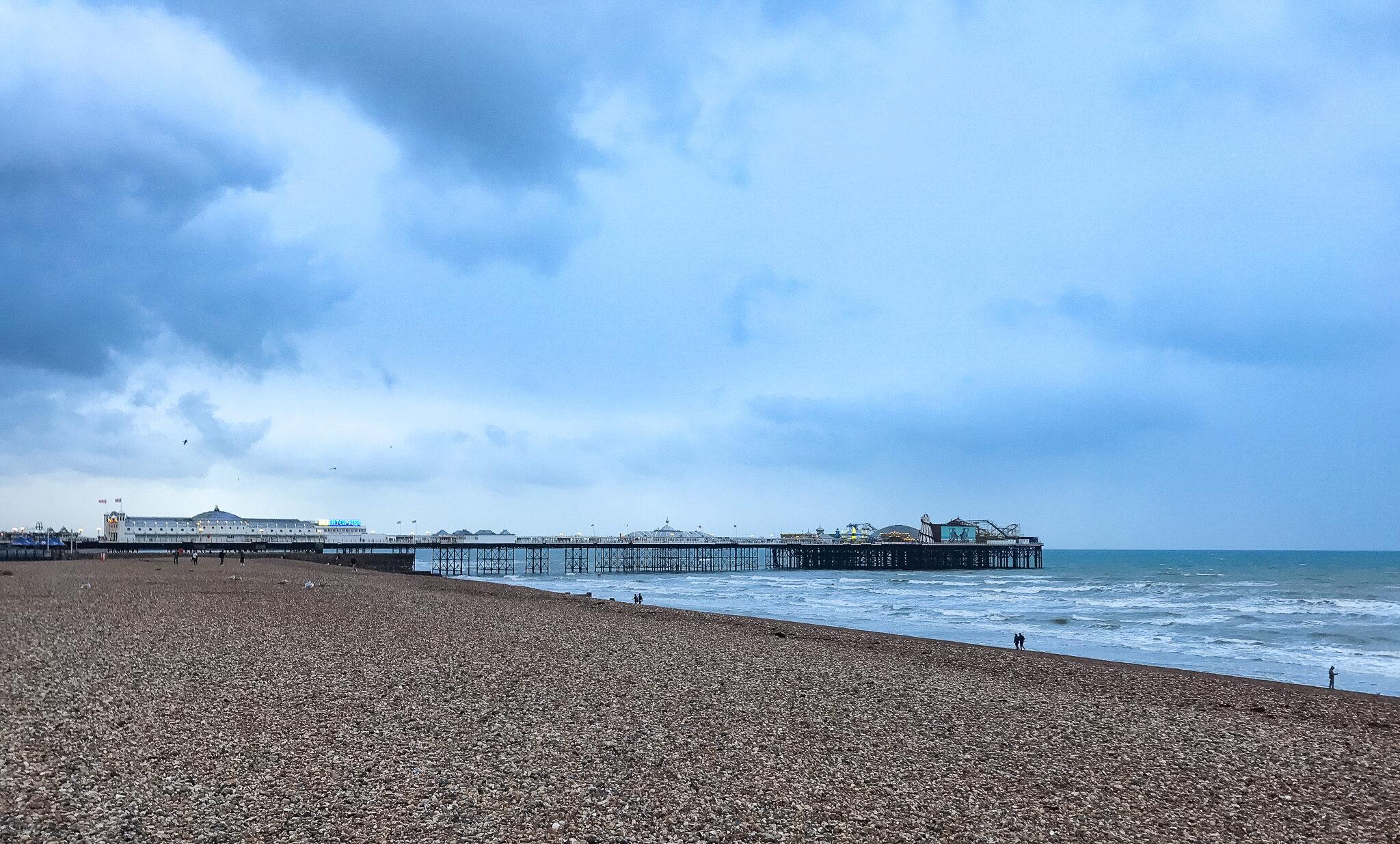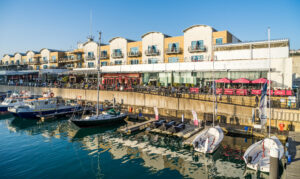Brighton is one of the UK’s most popular tourist destinations and without a doubt the leading seaside city in England, with over 10 million day-trippers visiting in 2022. For all of its fabulous tourist attractions, brilliant nightlife and vibrant community, one thing rises above all else as the main reason for Brighton’s popularity – the sea! So whether you’re one of those ten million day-trippers, just getting started as a student at one of the universities or a fully-fledged local Brightonian, the ultimate way to experience Brighton is to embrace the true spirit of this incredible city with a dip in the sea.
A Guide to Brighton Sea Temperature
Brighton’s current reputation as a seaside resort actually owes itself to the practice of sea swimming (and seawater drinking!). In 1750, Dr Richard Russell published a scientific paper entitled De Tabe Glandulari, ‘in which he recommended the use of seawater for the cure of enlarged lymphatic glands’, and in particular he encouraged readers to visit Brighton (then Brighthelmstone), where he had conveniently set up practice! Dr Russell’s advocacy set in motion events that led to Brighton being the tourist hotspot it is today, where the benefits of those seawater swims are still being felt by residents and visitors alike.
Whilst some of the scientific claims made by Dr Russell and others have been questioned (it’s best not to drink the seawater!), there has been new research into the subject in recent years focusing on the mental wellbeing benefits of sea swimming, including from academics at the University of Brighton. There are physical benefits to braving the cold water as well, with research finding that you are less likely to have chest infections if you regularly go sea swimming all year round. Many Brighton locals have cottoned on to these benefits and regularly swim in the sea, and you can join them through various clubs and groups in the city, including the oldest swimming club in the country, Brighton Swimming Club, and The Salty Seabirds.
So now you know the history, you’re looking forward to those health benefits and you’re ready to head to Brighton beach, there’s just one key question left to answer, exactly how cold is it going to be?

The good news is that thanks to its southerly location Brighton has some of the warmest sea temperatures in the UK, reaching the high teens in late summer. The bad news is that Brighton is in England so no matter what time of year it is, the sea is never going to feel particularly warm! Indeed, on a global scale anything below 18°C is considered to be ‘cold water swimming’. Throughout the year, the average sea temperature in Brighton ranges from a low of around 7°C at the beginning of March to 17.5°C in August, so the water is ‘cold’ at all times of year (for reference, a bath or shower is generally around 35-40°C and your local indoor swimming pool is likely to be around 26°C). However, there is an important difference between the water feeling cold and being dangerously cold – sea temperatures of below 10°C are considered to be dangerous and you should not enter the water without a wetsuit.
Most tourists visiting Brighton do so in the summer months, with July & August the most popular for those beach-bathing weekend visits. Although the sea temperature is at or near its highest at this time of year, it can feel a bit colder as the difference between the water temperature and the air temperature is greater than at other times of year. Given this, the water can feel much warmer during September and October as outside temperatures begin to drop but water temperatures stay relatively high. However, it is important to remember that once you are in the water the air temperature doesn’t matter too much, so although the sea might feel relatively warm in February, it is still dangerously low.

As a result of these changes in sea temperature, at different times of the year it is safe to swim off Brighton beach depending on what you’re wearing. If you fancy taking a dip and you’re in just your swim shorts or swimming costume, it is considered generally safe and comfortable to do so from July to October. In May, June, November and December the sea temperature is above 10°C but it is advisable to wear a wetsuit with a thickness of 3-4mm, and if you do brave it in ordinary swimwear you should not stay in for too long (important to note for all those thinking of taking part in the Christmas Day sea swim!). From January to April, the sea at Brighton is below 10°C and you should not stay in the water for more than a few minutes without a wetsuit (which it is recommended should be at least 5mm thick).
If you do decide to enter in the colder months of the year, you can experience one of Brighton’s most extraordinary natural phenomena from the unique vantage point of the sea. From November to February hundreds of thousands of Starlings return to their roosts in Brighton’s two piers each evening, creating incredible moving patterns known as ‘murmurations’. If you brave the sea around sunset then you can experience this up close – check out local sea swimming groups who sometimes organise group swims when murmurations are likely to be happening.
If you fancy jumping into the sea in Brighton the best time of year to do so is from July to October, when the water is above 15°C. At this time of year, you can comfortably swim without a wetsuit, although it will still feel cold! Outside of these times, it is still safe to go sea swimming in Brighton, but it is generally advised to wear a wetsuit. Once sea temperatures get below 10°C from January to April you should wear a wetsuit, particularly if you are planning on staying in the water for more than a few minutes. Do remember that these guidelines are based on average temperatures. You should always check the temperature of the sea before entering (you can do so here) as it may well be lower than you expect, and you should never go sea swimming alone. For more guidance on swimming safely in the sea at Brighton you can access the Brighton & Hove Council Sea Safety Guide here.






